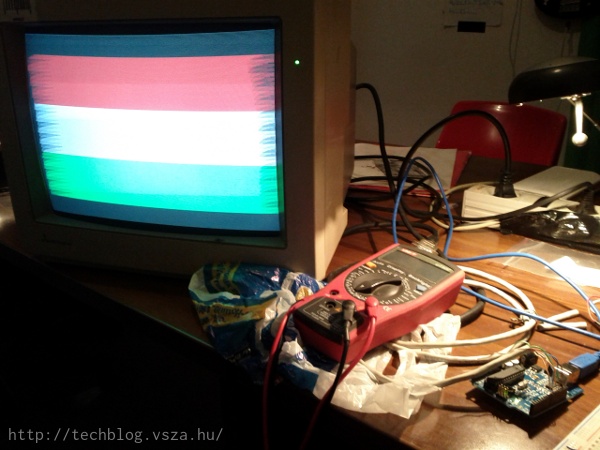
The best laid plans of mice and men oft go awry. At least that’s what we’d tell ourselves if we couldn’t find a 30-year-old computer monitor. [Andrew] picked up an old IBM XT on eBay recently and tried to get the video working. He hasn’t seen any success yet, but the way he goes about solving this problem is very clever.
[Andrew] was stuck with a cool old computer with no way to output anything onto a screen. The XT had an MDA port but neither his TV nor his VGA monitor would accept MDA frequencies. As a workaround, [Andrew] connected an Arduino to the XT keyboard port. On the factory floor, IBM workers used the XT keyboard to load code onto the machines while POSTing. He was able to change the frequency of the MDA CRT controller to CGA frequencies, and with the help of some small components got some video working.
The Hsync and Vsync are still off, and [Andrew] hasn’t been able to get the machine to finish POSTing, but he figures he can use the XT keyboard port for bidirectional communication. He’s written a very small kernel to test out a few things, but unfortunately the XT’s power supply died recently. Once [Andrew] replaces that, we’re sure he’ll get his box up and running.












